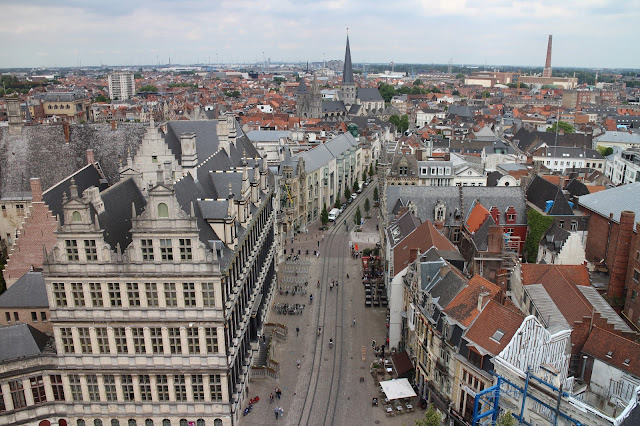Ghent, Belgium
The earliest signs of human settlement in Ghent date back to pre-historic times, but it was only in the Roman period that a community worthy of note began to grow on the site. It is thought that the name Ghent derives from the Celtic Ganda, the confluence of two rivers.
The city of Ghent was thus (re)founded around 630 when Saint Amandus chose the site to build two abbeys, Saint Peter's and Saint Bavo's.
In the 9th century, the city was twice attacked and plundered by Vikings and, unable to defend itself, fell under the protection of the Count of Flanders. However, until the Battle of the Golden Spurs in the early 14th century, Ghent sided mostly with France against the Count of Flanders.
From 1000 to 1500 Ghent was one of the most important cities in Europe, second only to Paris.
In 1407 the Council of Flanders, the highest judicial body of the County, moved to Ghent and since then Dutch became the official language.
In the 15th century, the centre of political and social importance started to shift from Ghent-Bruges to Antwerp-Brussels. In the 16th century, Ghent rebelled against Charles V- born in Ghent- and was defeated. It also lost its passage to the sea and altogether these factors lead to the worsening of the economic situation, reducing the city's population in half.
It was only in the second half of the 18th century, following the industrial revolution, the reopening of the access to the sea and the establishment of the University that there was an economic revival.
How to go: The train from Brussels to Gent Sint Peters takes about 40 min. The train station Gent Sint Peters is about 2 km from the city centre, but you can take a bus from there.
















Comments
Post a Comment